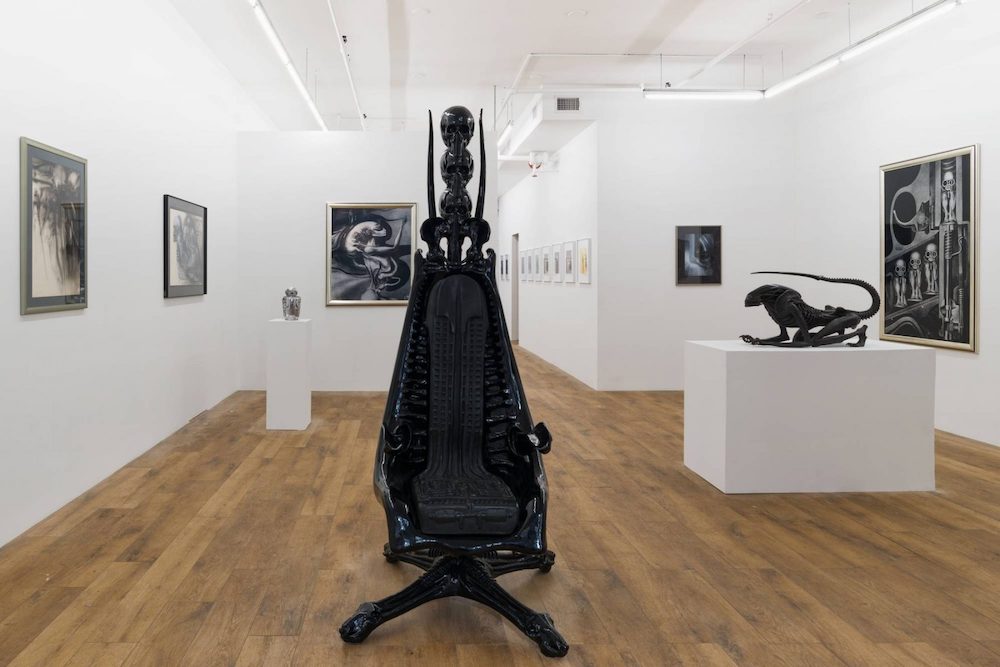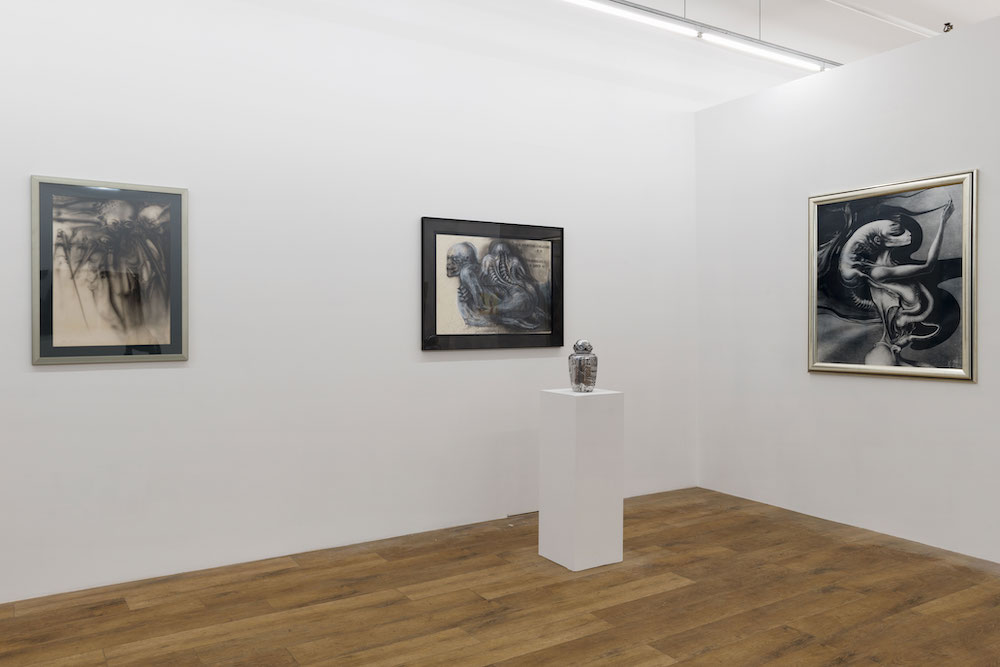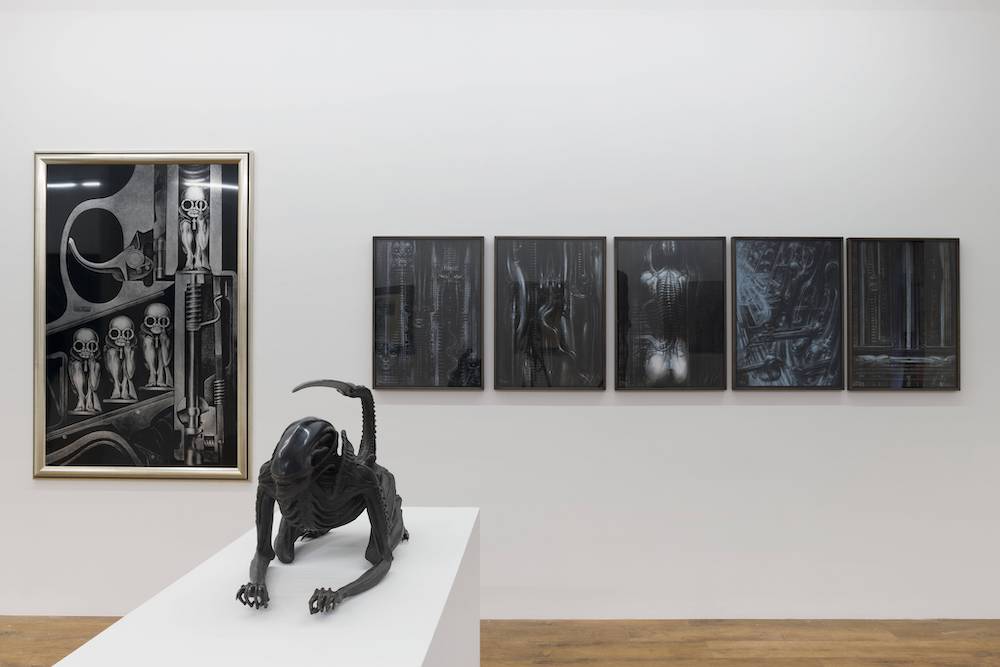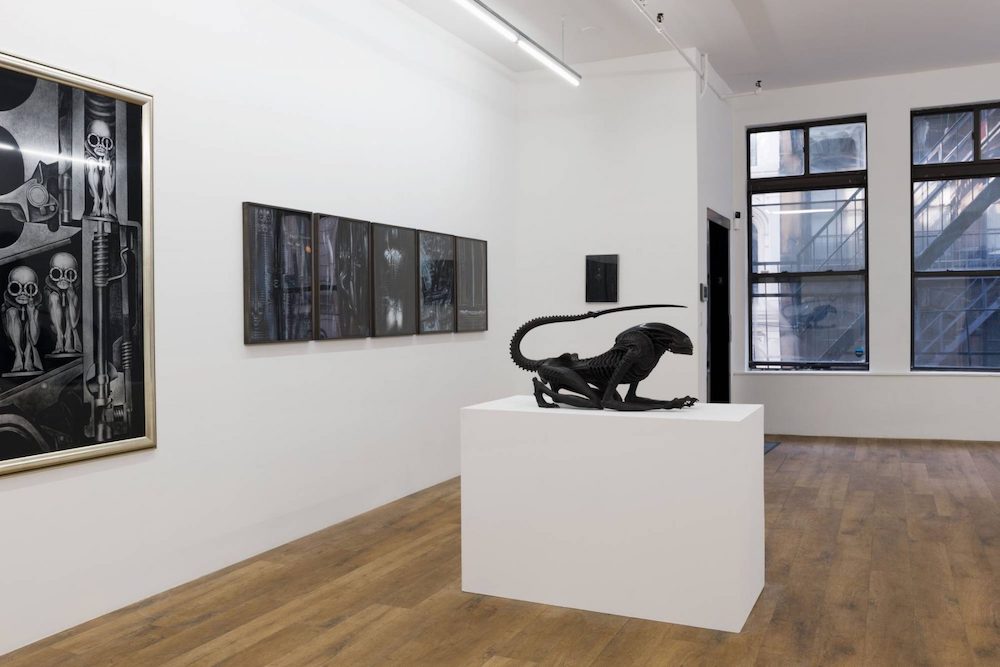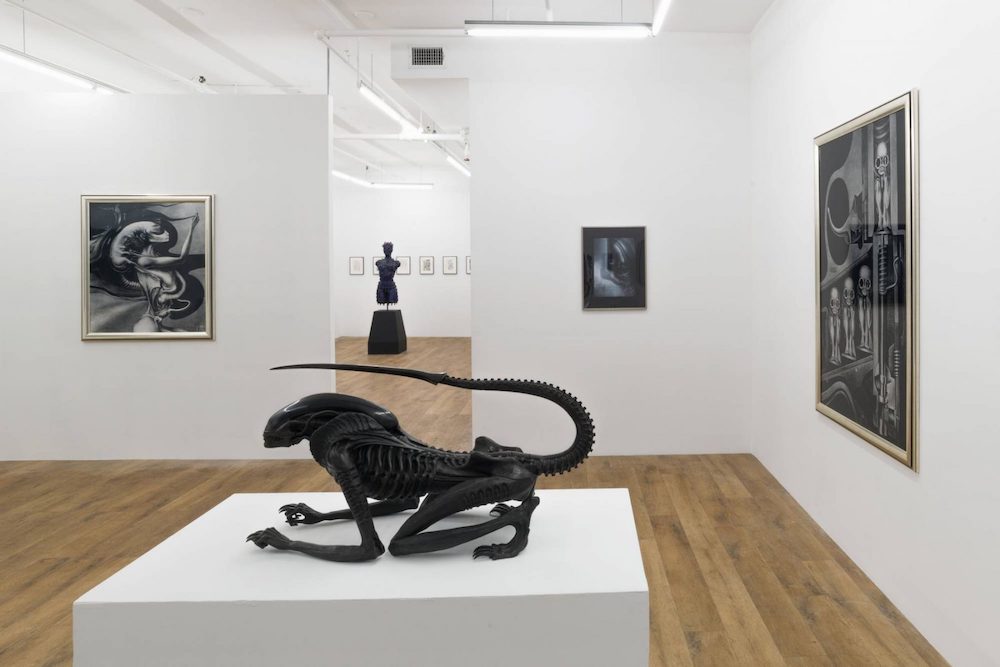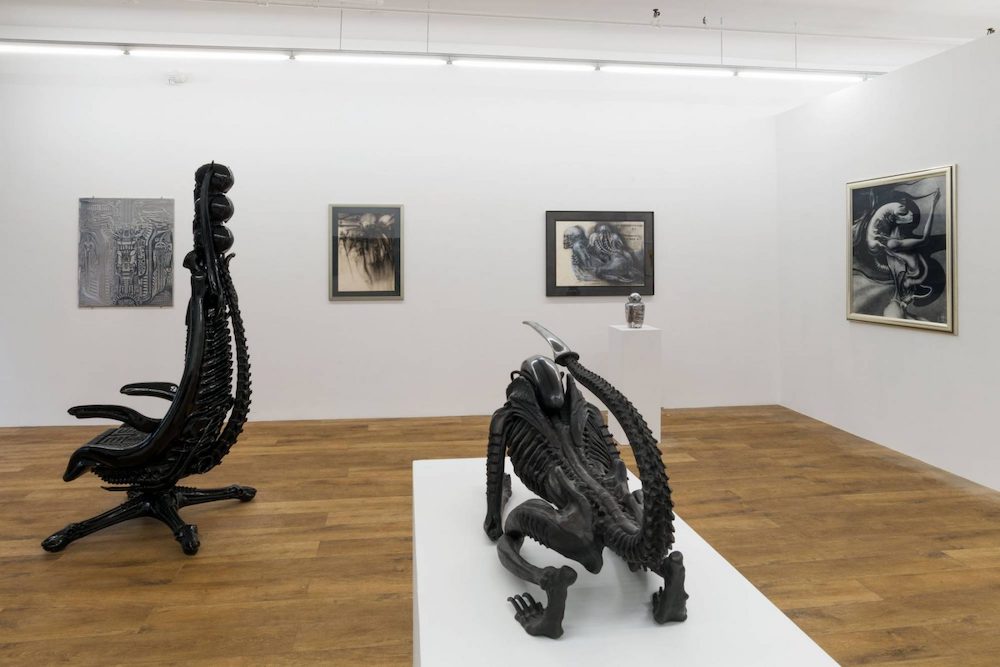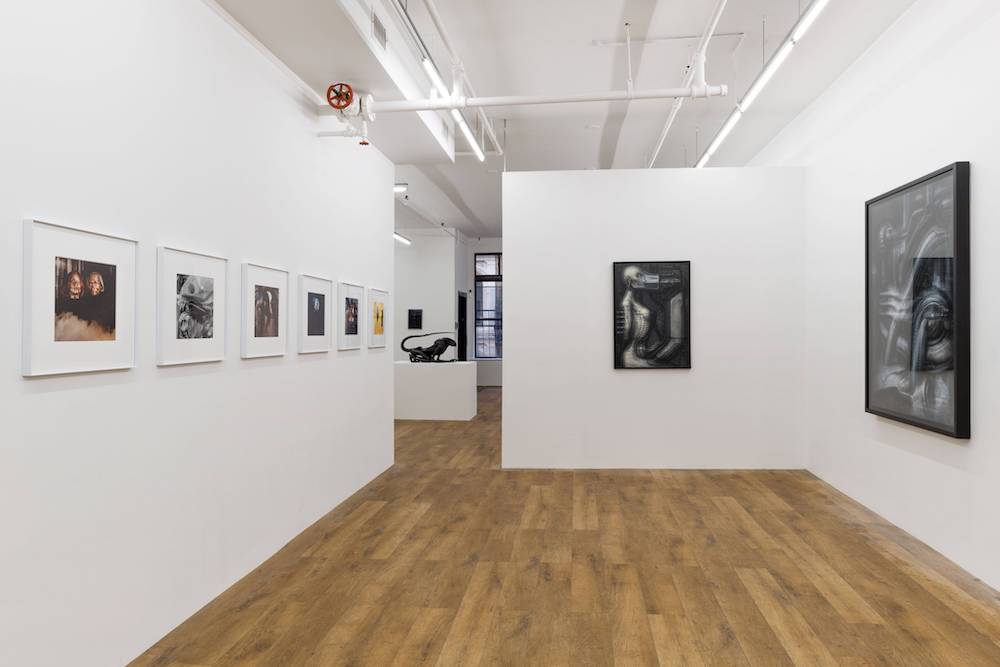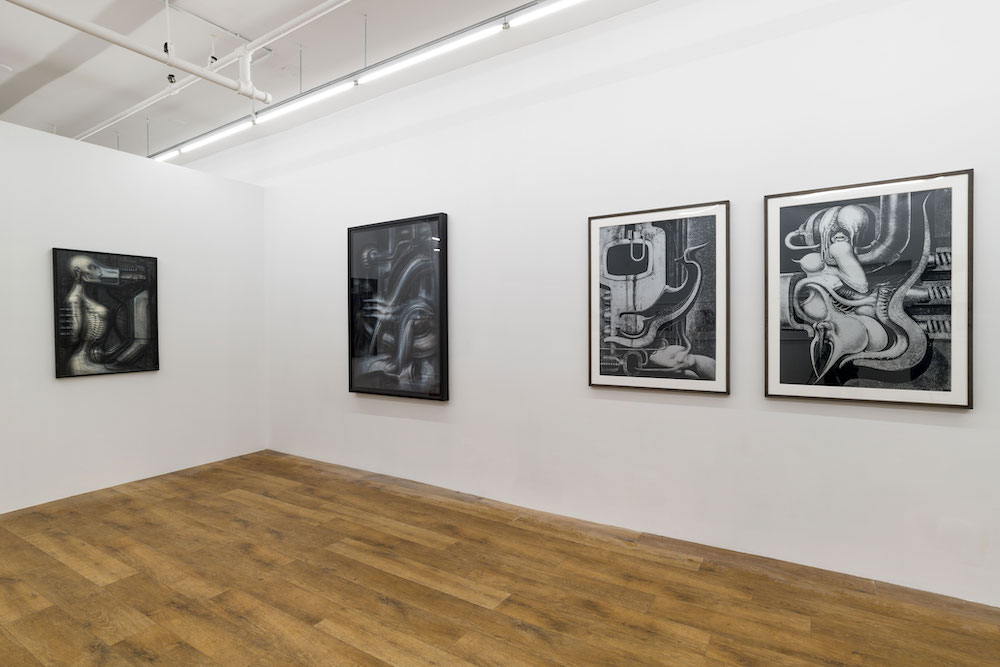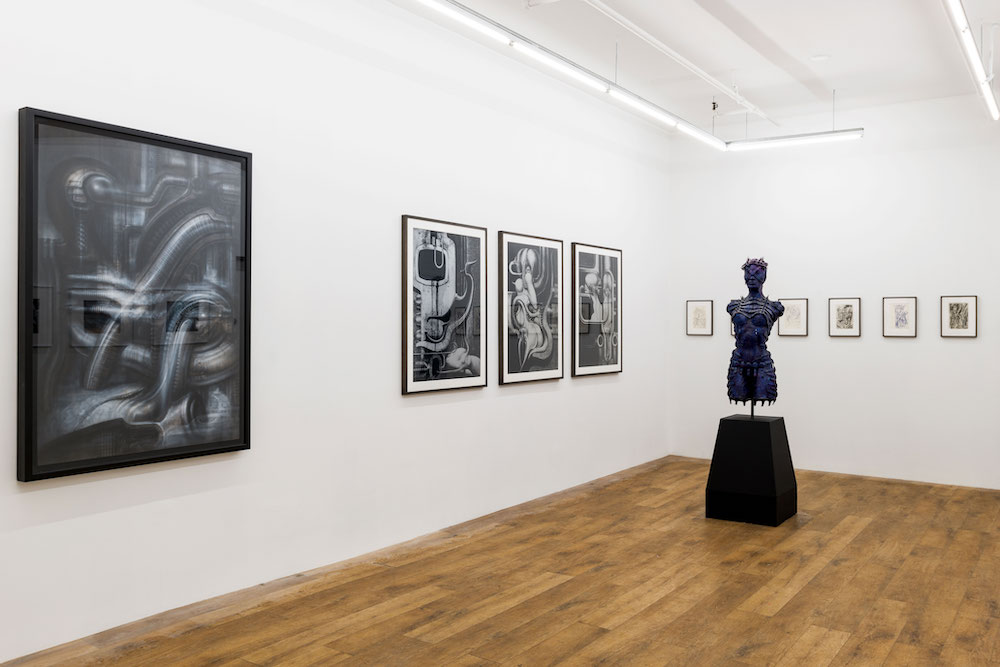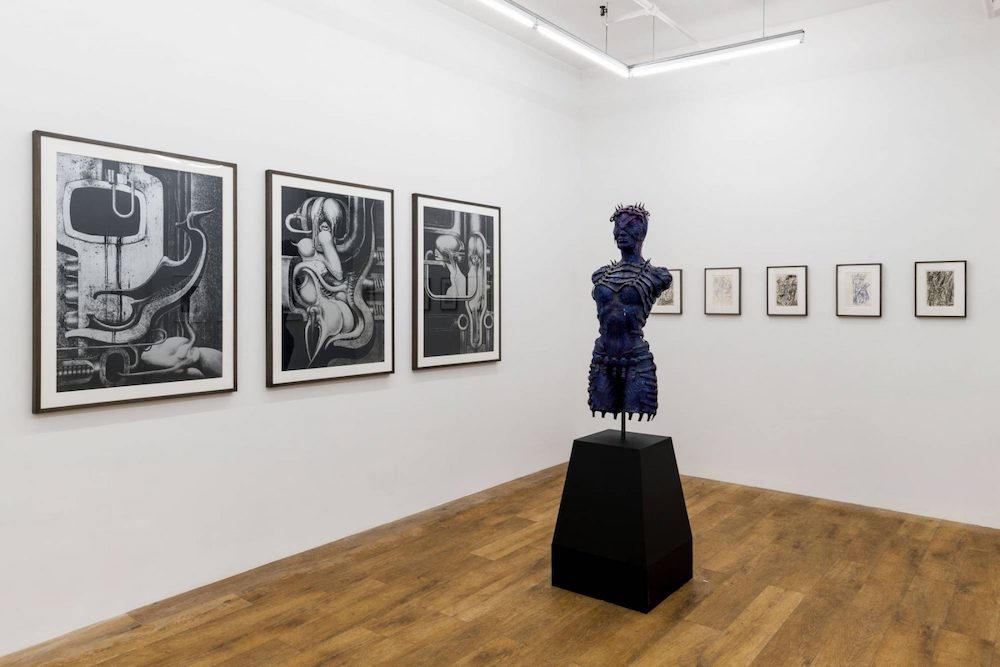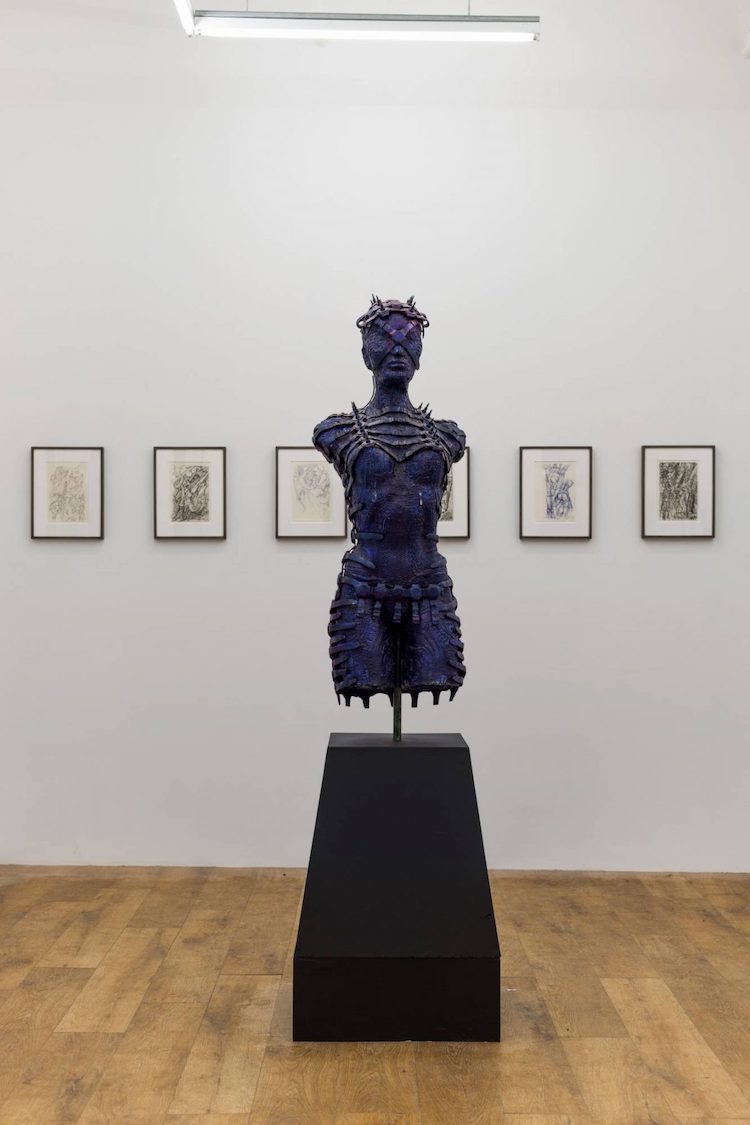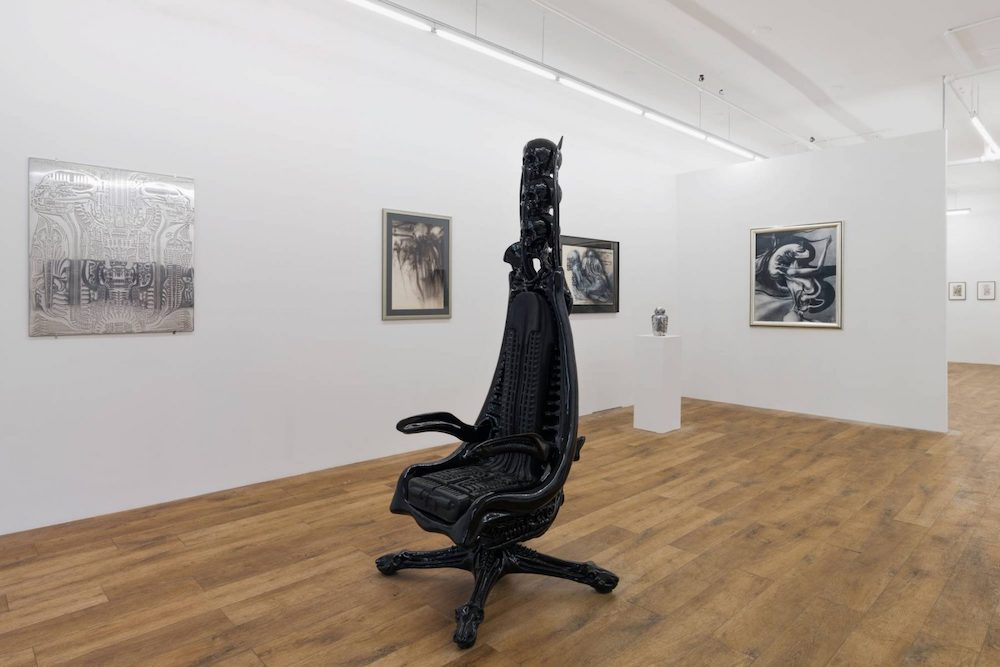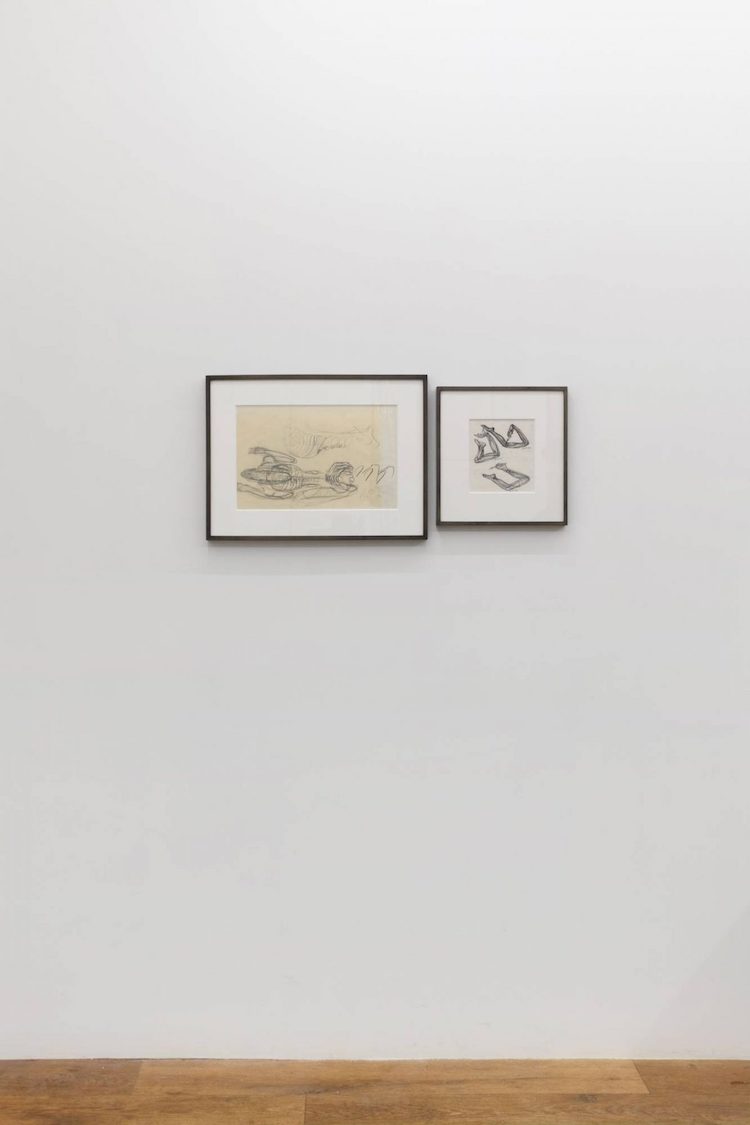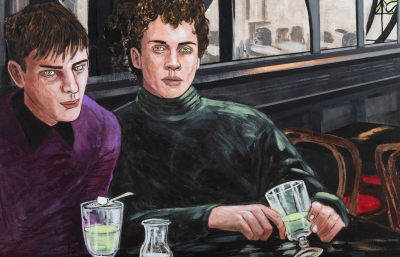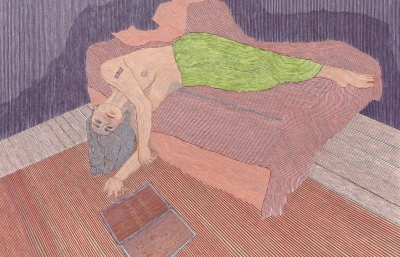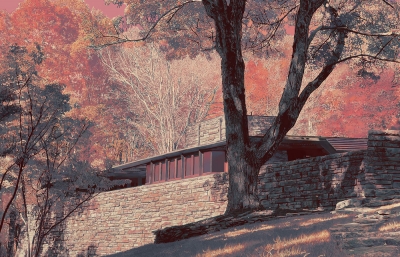Lomex is pleased to present a survey of the works by H.R. Giger, on view in the gallery through March 12, 2022. The largest exhibition of Giger’s work in New York in nearly three decades, HRGNYC draws from the breadth of his entire career and displays his manifold talents in a vast array of media.
Hans Ruedi Giger (1940 - 2014) was a Swiss Surrealist artist whose work had an indelible effect on the popular imagination of the last half century. Resonating far beyond even his iconic work for Ridley’s Scott film Alien, for which he won an Academy Award in 1979, his work had incredible influence on now-historical projections of the future in cinema, video games, animation, popular music and television, as well as across the landscape of contemporary art. His strange surrealist vistas, where bodies and machines meet in violent erotic communion, delineated an existence dominated by nightmarish technology–a vision which continues to exert its dark power on the aesthetics of the new throughout contemporary culture.
Long fascinated with New York as both as an idea and as a place of exhibition, Giger made many visits to New York and the city's landscape was a continuous source of inspiration to him throughout his career. Evident in his work even from the age of 18, New York’s skyline became the basis for a terrifying mythological world of technical and occult majesty, a negative utopia that expressed itself as a philosophical inverse of the sublime. His iconic “New York City” series, displayed at the Hansen galleries on 57th street in 1980, intermingled figures drawn from his own occult mythos with a claustrophobic futurist steel skyline. The NY paintings, made in airbrush without preparatory sketches, in their extraordinary precision appear at times almost as otherworldly photographs, and are landmarks of technical innovation with a method completely of Giger’s own devising. This body of work was the subject of an artist book published in 1981 by Ugly Publishing Zurich—Giger’s own pseudonymous publishing house—with a preface by Timothy Leary, which is now being republished by KALEIDOSCOPE on the occasion of this exhibition.
Even from Switzerland, Giger was an artist continually engaged in the counter-cultural fabric of New York and a major force in shaping the scope of Downtown. In 1980, he met Chris Stein, Blondie’s co-founder, guitarist and Debbie Harry’s life-long creative partner, and collaborated with Harry on the iconic KooKoo album cover, and its accompanying music videos. On view in the gallery are a selection of photographs taken by Chris Stein on the sets of this collaboration, a series that conveys the full array of the scope of Giger’s creative vision.
Giger continued to collaborate with numerous musicians and had far-reaching influence in punk rock, metal, techno, gothic, and industrial subcultures. In 1998, he designed the VIP room of Peter Gatien’s landmark hells-kitchen club The Limelight. Housed in a deconsecrated church on 20th street, the collaboration established him as a cultural icon of NYC Nightlife. The Limelight VIP room’s otherworldly landscape, infamous haunt of the Club Kids and apogee of New York cool, only closed its doors upon the destruction of the club in 2002. Giger’s Harkonnen Chair, original designed for the film Dune, on view in the gallery, was a centerpiece of that installation. The demise of Gatien’s club, repeatedly targeted by the Giuliani administration, led to a change in the fabric of Downtown which continues to this day.
Despite Giger’s cult-like status amongst leading contemporary artists and his far-reaching influence on popular culture, he has been absent in many ways from the main narrative discourse of contemporary art history. This exhibition, part of an international effort to redress this curious situation, hopes to begin to situate Giger as one of the most impactful and provocative artists of the latter half of the twentieth century, a key figure in the cultural history of New York, and as an artist of extraordinary relevance to our current fraught political and ecological moment. —Alexander Shulan



